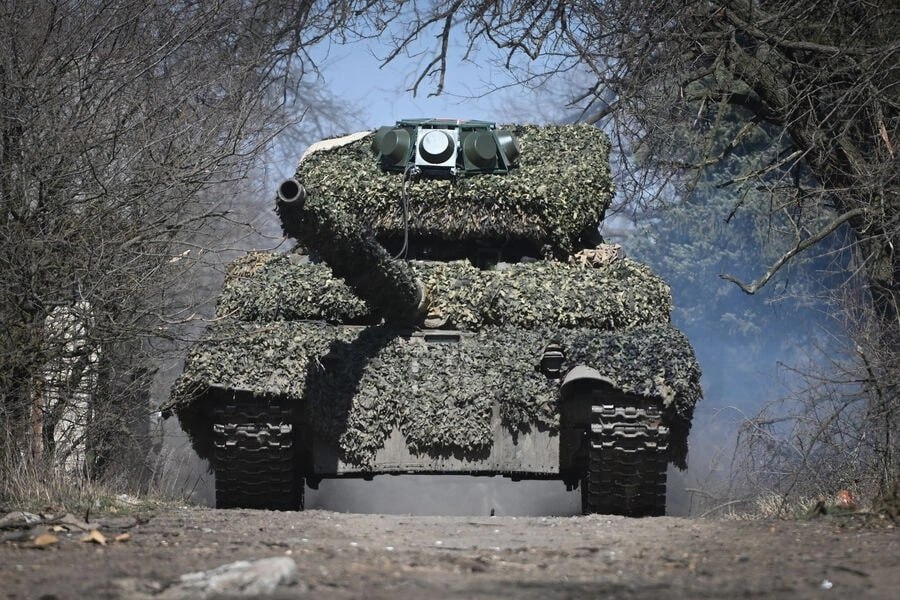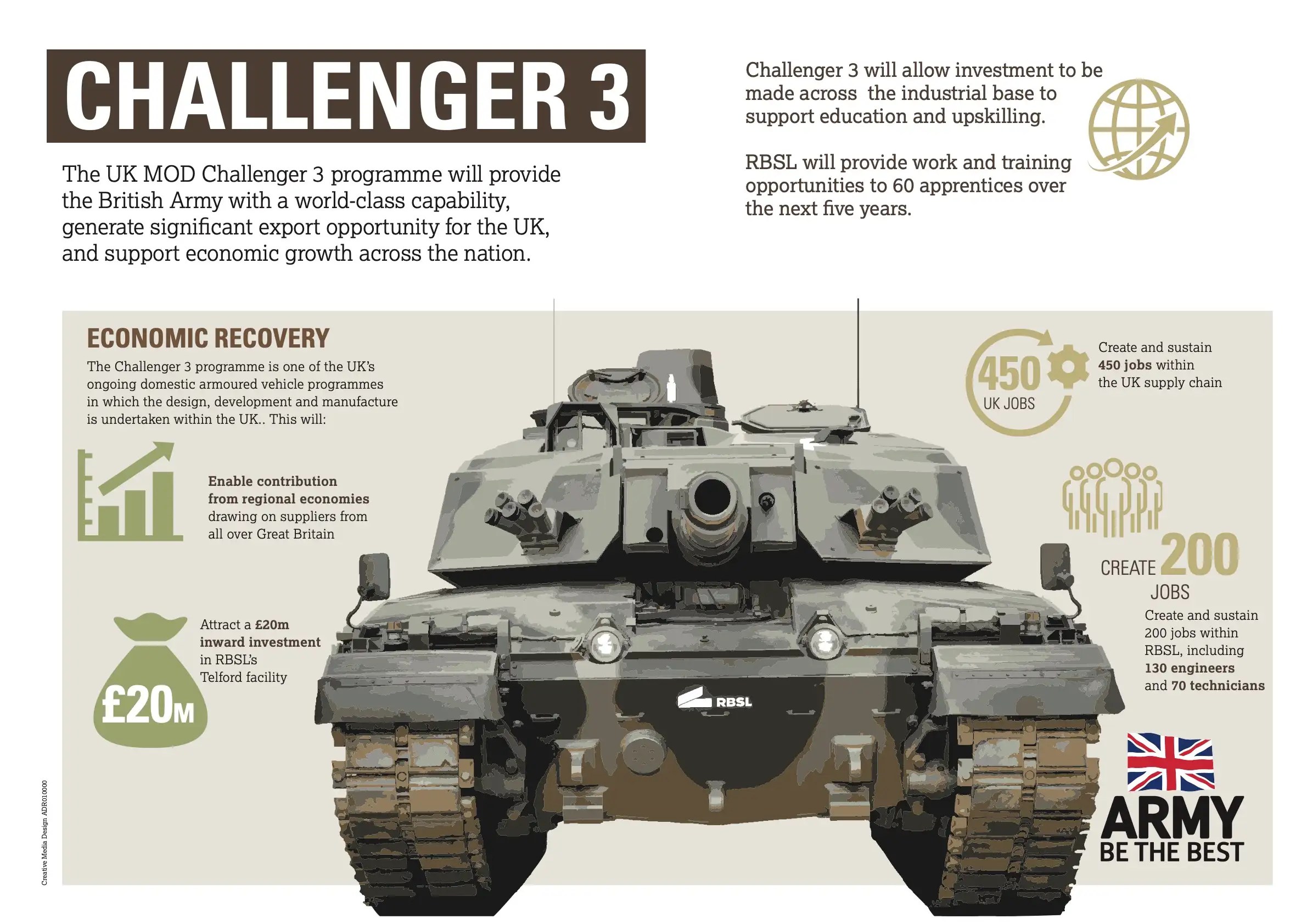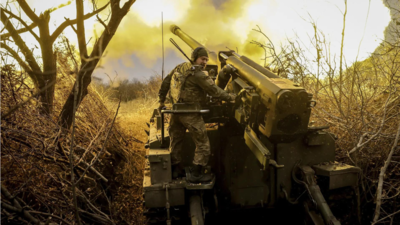Is the dominance of tanks in modern wars coming to an end?
This question is increasingly attracting the attention of military experts as the ongoing war in Ukraine and the second Nagorno-Karabakh War between Armenia and Azerbaijan not long before have witnessed staggering numbers of tanks being destroyed and outgunned, particularly by military drones.
According to a recent report in the Moscow Times, as of May 1, 2024, Russia has lost 2,006 armored personnel carriers (APC) and armored fighting vehicles (AFV); these have been destroyed, abandoned, or captured. The situation with losses among infantry fighting vehicles is even worse, says the report.
The report quotes the study by the International Institute of Strategic Studies and adds that though Russia had 14,193 armored personnel carriers and infantry fighting vehicles in service at the start of 2022, as of May 13, 2024, 42.08% of those had been lost.
Other reports suggest that Russia has so far lost more than 2,900 tanks, although Ukraine claims that the number exceeds 7,000.
Ukraine’s score in losing tanks is equally egregious. According to a recent report in the New York Times, Russian forces have taken out five of the 31 American-made M1 Abrams tanks, said to be among the world’s mightiest, that the Pentagon sent to Ukraine last fall. At least another three have been damaged.
Besides, the NYT report, based on Oryx, a military analysis site that counts losses based on visual evidence, said that 796 of Ukraine’s main battle tanks have been destroyed, captured, or abandoned since the war began in February 2022.
A vast majority of these destroyed tanks are said to be Soviet-era, Russian, or Ukrainian-made tanks. But those destroyed also included 140 tanks that were given to Ukraine by NATO states. Significantly, in this list of 140, at least 30 happened to be German Leopard tanks that have also been targeted and destroyed.
Of course, as is the case with every weapon or combat platform, counter measures have always been devised by countries to deal with the tanks, but they have survived and have become stronger. For years, they were mainly targeted with land mines, improvised explosive devices, rocket-propelled grenades, and anti-tank-guided missiles.
Experts say tanks have been vulnerable where their heavy-plated armor is the thinnest: on top, the rear engine block, and the space between the hull and the turret.
Accordingly, countries have tried to plug those loopholes by retrofitting the tanks with sheet metal. The idea was that when a shell hits the first layer of metal, it is blunted and knocked off course, making it less effective when it reaches the main armor. Spaced armor has also been used on tanks to protect them from “shaped-charge” warheads carried by rocket-propelled grenades. Similar protective measures have been undertaken; tanks have been given high-quality artillery and air support to prevent offensive actions.
However, the situation or warfare seems to have changed now. Troops operating on foot have the firepower to hurt tanks. The war in Ukraine has shown how cheap and disposable weapons, better known as next-generation light anti-tank weapons (NLAW) and drones, are highly effective in taking tanks out of action. NLAWs are proving their flexibility in attacking from almost any position, “from up high in a building to behind a tree or in a ditch.”
Reportedly, the Ukrainian army has attacked Russian tanks on motorcycles, buggies, and golf carts or unarmored Ural trucks encased in anti-drone cages.
Besides, cheap drones armed with explosives, each costing less than $500 apiece, have been able to take out a $10 million Abrams tank in Ukraine. Known as first-person view drones, or FPVs, they are equipped with a camera that streams real-time images back to their controller, who can direct them to hit tanks in their most vulnerable spots.
Such drones carry, apparently, small shaped charges that may not be powerful enough to pierce a tank’s thick frontal armor, but they target vulnerable thin parts, such as the roof and sides, instead. Apparently, in several cases, the FPVs have been sent in to “finish off” tanks that had already been damaged by mines or anti-tank missiles so that they could not be retrieved from the battlefield and repaired.

It is now accepted that the vast number of cheap, effective drones used in Ukraine is a problem for both sides. They can destroy even the most heavily armored modern tanks, including America’s Abrams and Britain’s Challenger 2.
Latest reports suggest that Ukraine’s U.S.-supplied M1A1 Abrams tanks are getting new production-standard anti-drone armor screens on their turrets and additional explosive reactive armor (ERA) modifications.
Reportedly, these counter-measures followed roughly a month after U.S. officials had apparently admitted that Ukrainian forces had pulled the M1A1s from the front lines, particularly due to concerns about their vulnerability to FPV kamikaze drones and other uncrewed aerial threats.
Russia, too, has improved its T-72 tanks with new types of armor called “super cage armor.” These include improvised metal roofs layered with metal grills. Ukrainian social media channels have nicknamed these vehicles “turtle tanks,” while Russian media accounts have referred to them as “Tsar Mangal,” “Tsar’s BBQs,” or” the conqueror of Krasnohorivka.”
The purpose of these countermeasures is to set off drones’ explosive charge early, decreasing the chance of projectiles from drones penetrating the hull.
According to Russian media reports, these tanks are a “brilliant addition” to the Russian arsenal. But experts say the results are mixed. While initially, these tanks did very well, over the last month, Ukrainian troops have been reportedly able to figure out how to destroy them.

It is said that the modified T-72’s sheet armor has big downsides. The shell is heavy and thus slows the tank. It also prevents the vehicle from rotating its turret, limiting its ability to fire on attackers and severely restricts visibility.
The increased weight particularly restricts the use of its aquatic obstacle-crossing equipment and prevents the operation of smoke grenade launchers. These constraints drastically reduce the tank’s capabilities, and experts point out that despite the intention to increase its survivability on the battlefield, they limit its versatility and effectiveness in combat.
In other words, the war in Ukraine is witnessing both Moscow and Kyiv creating a “constant cat and mouse game.”
This game implies that none of them is prepared to abandon tanks as vital parts of their armed forces. All told, Ukraine continues to request tanks from its supporters in Europe and the United States.
If Viktor Murakhovsky, a retired Russian veteran, is to be believed, “High-intensity combat operations between technologically comparable countries are unimaginable without the large-scale use of tanks,” given the firepower, mobility, survivability, endurance, and cost-effectiveness of the tank.
He suggests that “future tanks could use their own drones to extend their sensory capabilities, allowing the operators to see around corners or over obstacles that would pose the possibility of ambush.”
It is pretty obvious from the above that the tank is still an important part of the battlefield. It is premature to write it off as obsolete in modern wars. In fact, leading countries are now developing fourth-generation tanks to avoid their obsolescence.
Russia is developing its fourth-generation main battle tanks called T-95 and T-14 Armata. The U.S. is working on its AbramsX prototype. It is also developing the M10 Booker with countermeasures for protecting tanks against one-way attack drones, which experts say are a growing challenge even for vehicles traveling at speed.
The U.K. is planning to replace its Challenger 2 tanks with upgraded Challenger 3 models. Germany is also laboring hard on the Leopard 3, a successor to its popular Leopard 2.

It is said that these fourth-generation tanks should be less vulnerable, with an array of electronic and digital countermeasures and stealthier designs.
They are supposed to use advanced “active protection systems”— which use radar to automatically detect incoming projectiles and then shoot them down a few meters from the vehicle using a high-speed interceptor—than crude armor. In fact, many experts consider electronic warfare to be the most promising defense against small drone variants.
- Author and veteran journalist Prakash Nanda is Chairman of the Editorial Board – EurAsian Times and has commented on politics, foreign policy, and strategic affairs for nearly three decades. A former National Fellow of the Indian Council for Historical Research and recipient of the Seoul Peace Prize Scholarship, he is also a Distinguished Fellow at the Institute of Peace and Conflict Studies.
- CONTACT: prakash.nanda (at) hotmail.com
- Follow EurAsian Times on Google News










